Our 2011 Eastern Europe Trip
Part 1 - Page 2
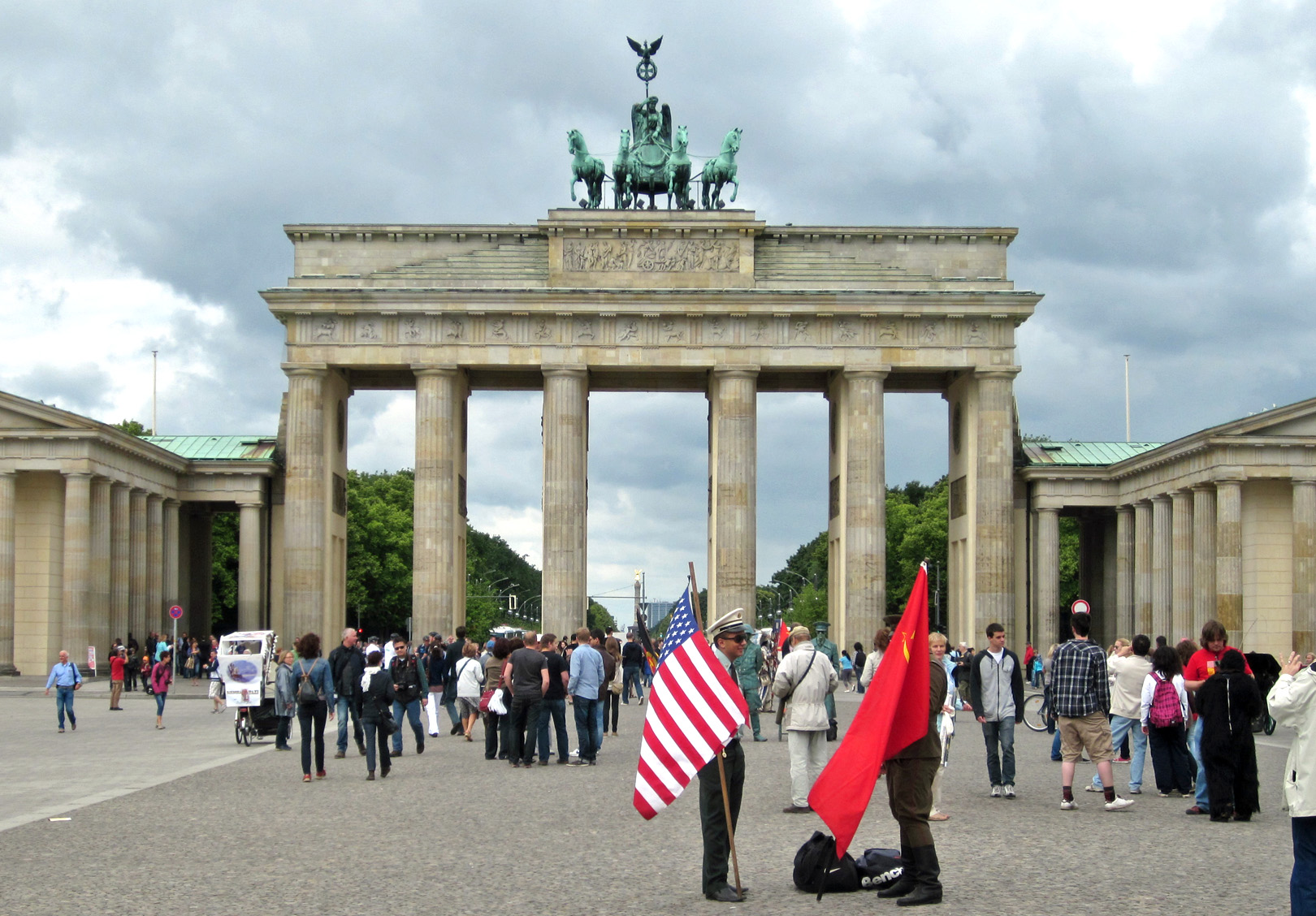
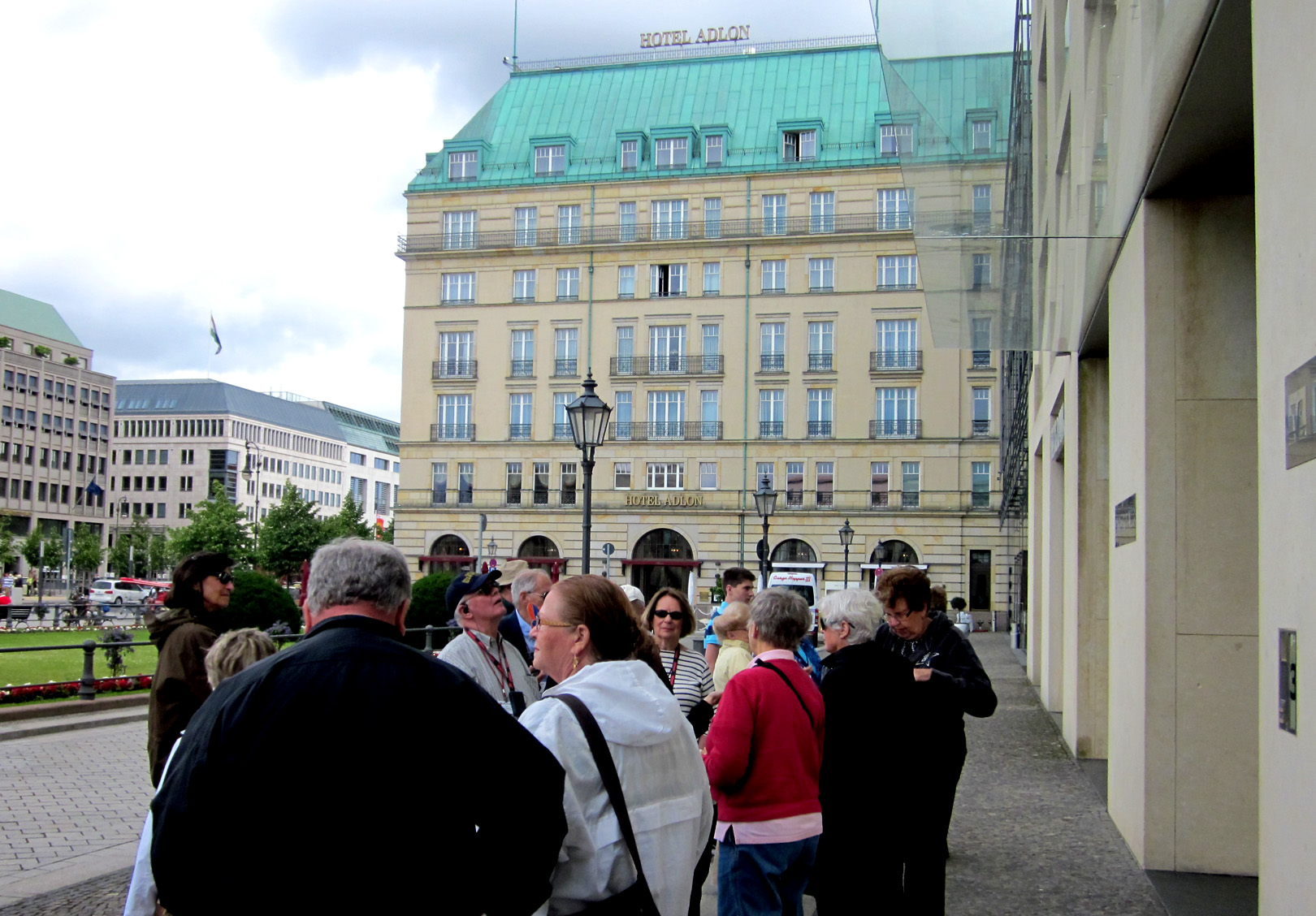
Here is another look at the Brandenburg Gate. Those "soldiers" are guys in fake uniforms that make money by having tourists pictures taken with them. The statue on the top of the gate is a reproduction after the original was destroyed in 1945. The statue is a "quadriga" showing 4 horses pulling a carriage holding a roman victory goddess. Here, in June, 1967, Ronald Reagan said:
"General Secretary Gorbachev, if you seek peace, if you seek prosperity for the Soviet Union and Eastern Europe, if you seek liberalization: Come here to this gate! Mr. Gorbachev, open this gate! Mr. Gorbachev, tear down this wall!"
The lower picture is the Hotel Adlon. Lots of dignitaries and celebrities stay here. The one we all remember is Michael Jackson who held is son out the window. I knew you'd remember that!
Here is a remainder of The Berlin Wall. You can see how high and how thick it was. There is another wall running parallel to it about 100 feet away. If you made it over the first wall, you had to cross a killing area before scaling the second. Not many people made it. At all the souvenier shops, you can buy bits of the wall. Our guide said that all those bits put together could wall in all of Germany. Meaning that most bits are fake!
Not too far from the Brandenberg Gate is an unidentified plot of ground behind a hotel that was the entrance to Hitler's Bunker. Everything has been destroyed except this little unkempt lawn and a bit of cobblestones.
We passed (but didn't go in) the Berlin Zoo. The Zoo is the oldest and best known zoo in Germany. Opened in 1844 it covers 84 acres and is located in Berlin's Tiergarten. With more than 1,500 different species and around 17,000 animals the zoo presents the most comprehensive collection of species in the world.
The zoo and its aquarium had almost 3 million visitors in 2010. It is considered to be the most visited zoo in Europe and one of the most popular worldwide. Regular animal feedings are among its most famous attractions. Globally known animals like Knut, the polar bear, and Bao Bao, the Giant Panda contribute to the zoo's public image.
During the Second World War, the zoo area was completely destroyed and only 91 of 3,715 animals survived. By the end of the war the zoo was fortified with Flak towers and a center of Nazi resistance against the Red Army and allied air forces with bunkers and anti-aircraft weapons.
The Soviet War Memorial (Tiergarten) is one of several war memorials in Berlin, capital city of Germany, erected by the Soviet Union to commemorate its war dead, particularly the 80,000 soldiers of the Soviet Armed Forces who died during the Battle of Berlin in April and May 1945.
This memorial was erected in 1945, within a few months of the capture of the city. Early photographs show the memorial standing in a wilderness of ruins, the Tiergarten having been destroyed by incendiary bombs and then stripped of timber for firewood during the last months of the war. Today, it is surrounded by the extensive woodlands of the reconstituted Tiergarten.
The memorial, built from stonework taken from the destroyed Reich Chancellery, takes the form of a curved stoa topped by a large statue of a Soviet soldier. It is set in landscaped gardens and flanked by two Red Army ML-20 152mm gun-howitzer artillery pieces and two T-34 tanks.
The Victory Column is designed in 1864 to commemorate the Prussian victory in the Danish-Prussian War, by the time it was inaugurated in 1873, Prussia had also defeated Austria in the Austro-Prussian War (1866) and France in the Franco-Prussian War (1870–71), giving the statue a new purpose. Different from the original plans, these later victories in the so-called unification wars inspired the addition of the bronze sculpture of Victoria, 8.3 meters high and weighing 35 tons. Berliners, with their fondness for giving nicknames to buildings, call the statue Goldelse, meaning something like "Golden Lizzy".
The Memorial to the Murdered Jews of Europe also known as the Holocaust Memorial is a memorial to the Jewish victims of the Holocaust. It consists of a 4.7 acres site covered with 2,711 concrete slabs or "stelae", arranged in a grid pattern on a sloping field. The stelae are 7 ft 10 in long, 3 ft 1 in wide and vary in height from 8 in to 15 ft 9 in. The stelae are designed to produce an uneasy, confusing atmosphere, and the whole sculpture aims to represent a supposedly ordered system that has lost touch with human reason.
An attached underground "Place of Information" holds the names of all known Jewish Holocaust victims, obtained from the Israeli museum Yad Vashem.
Here is the Brandenberg Gate from the East Berlin side. It's said that the East Berliners could only see the "horses asses".
We couldn't leave Berlin until we tried a "Currywurst". Its basically a big chopped up hot dog smothered in ketchup and doused with curry powder. It was supposedly introducd by US GI's after WWII. I'd like to meet the GI who did this. They are OK, but not great. 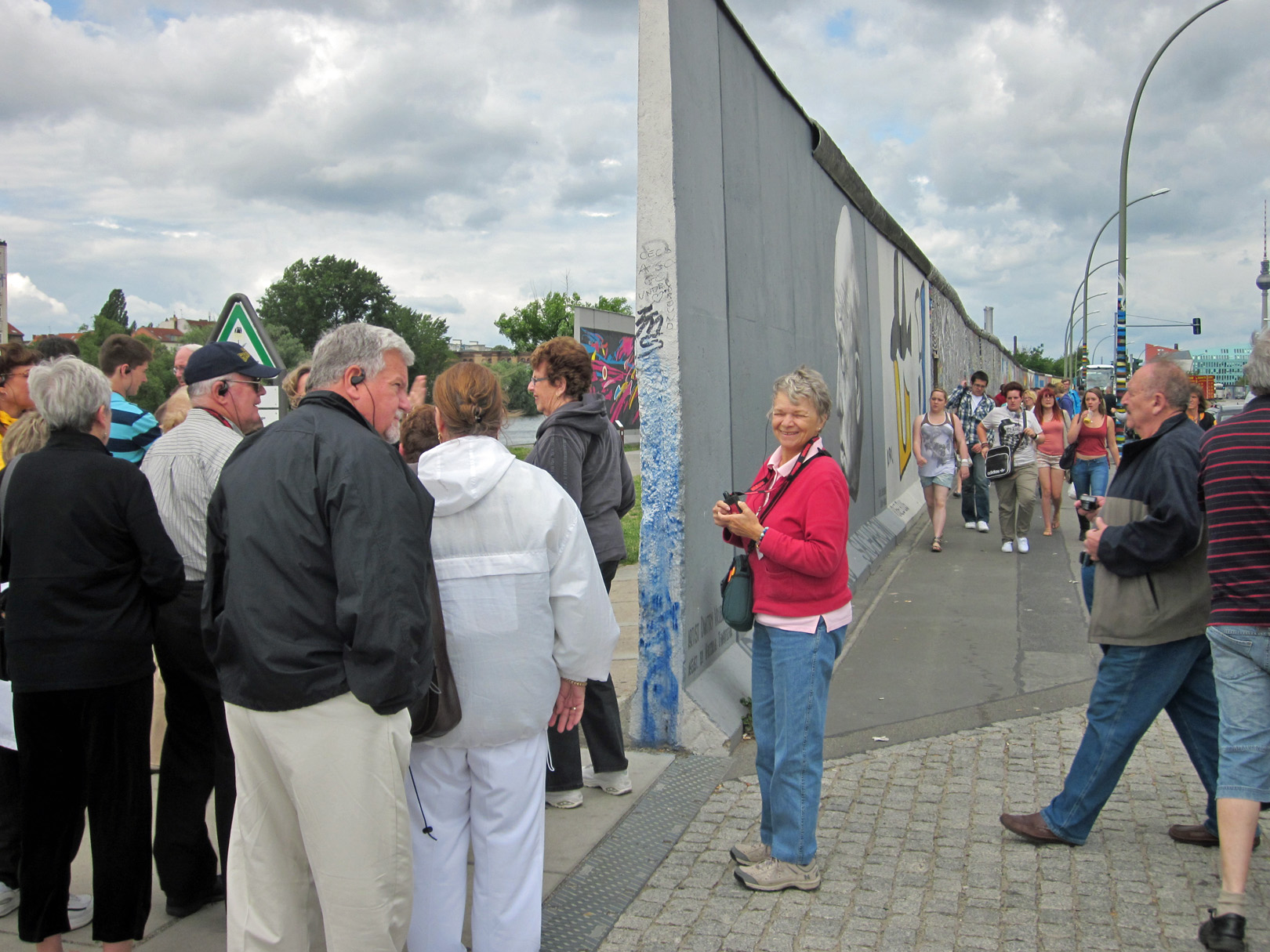
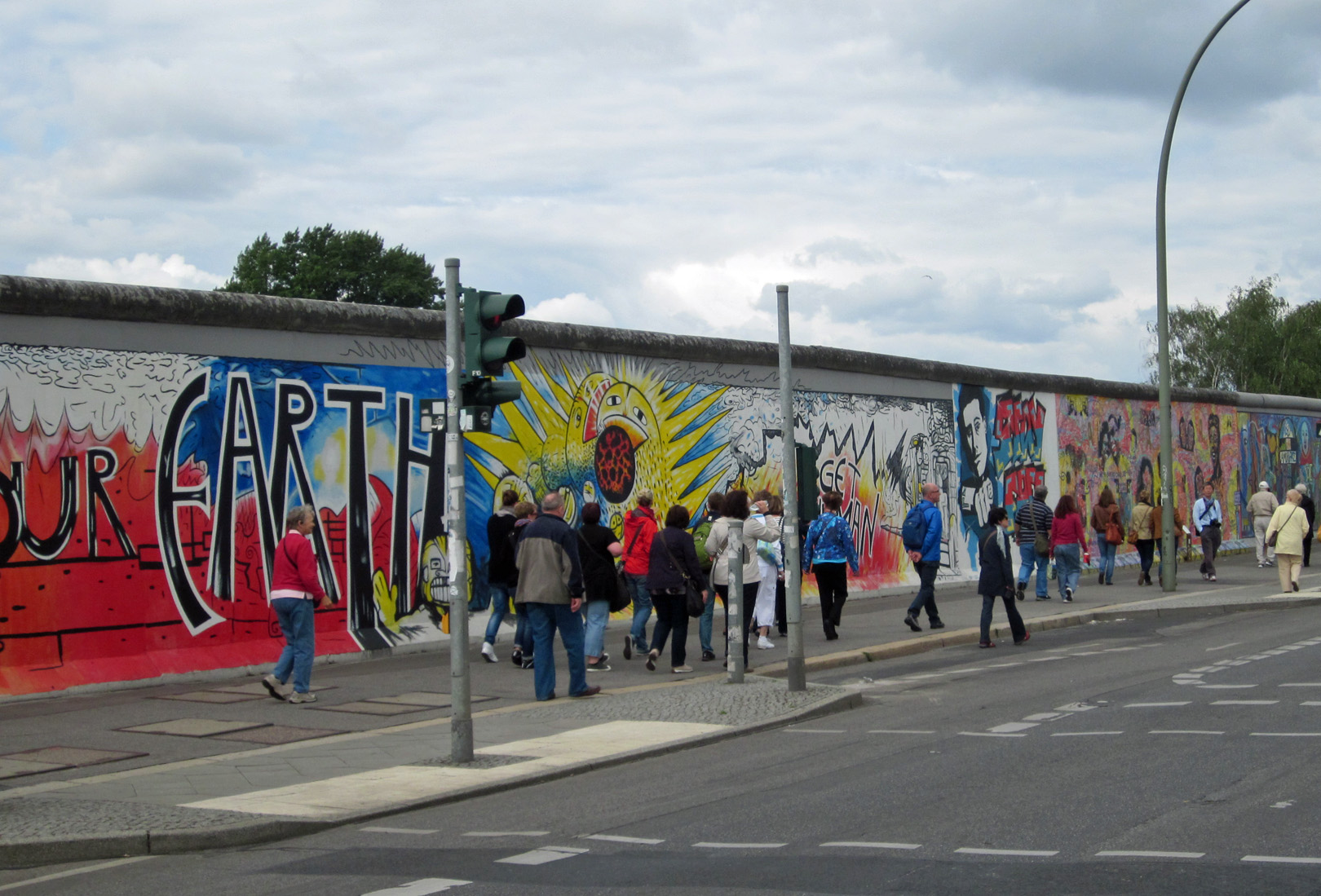
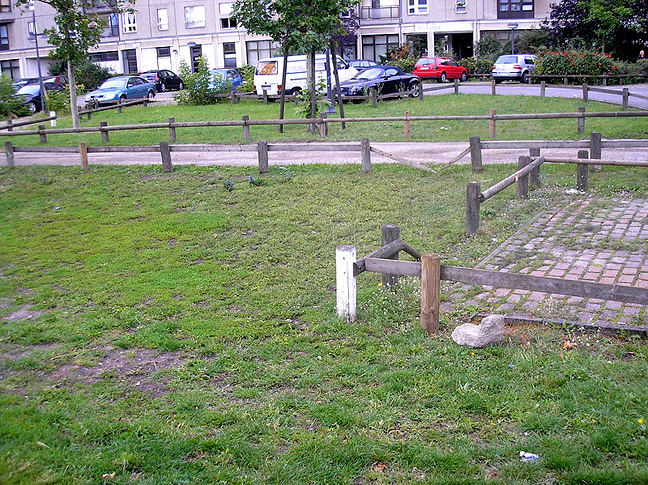
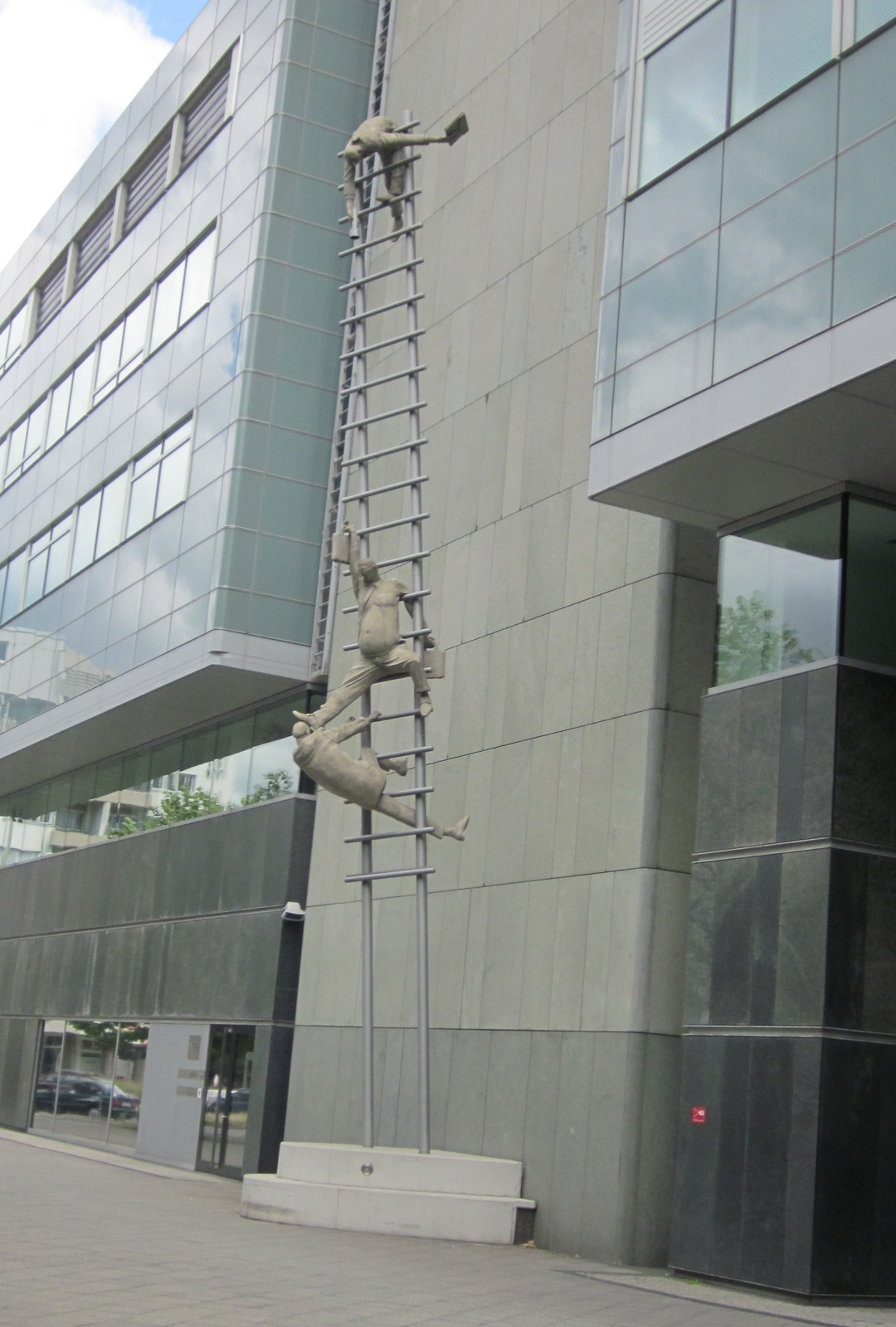 On Day 3, after our city tour on the bus, Mary Ann and I skipped the optional tour to Potsdam and struck out on our own. We saw this neat statue in front of a bank. It seems to depicts 3 bank robbers on the lam. What it really depicts is businessmen on the corporate ladder.
On Day 3, after our city tour on the bus, Mary Ann and I skipped the optional tour to Potsdam and struck out on our own. We saw this neat statue in front of a bank. It seems to depicts 3 bank robbers on the lam. What it really depicts is businessmen on the corporate ladder.
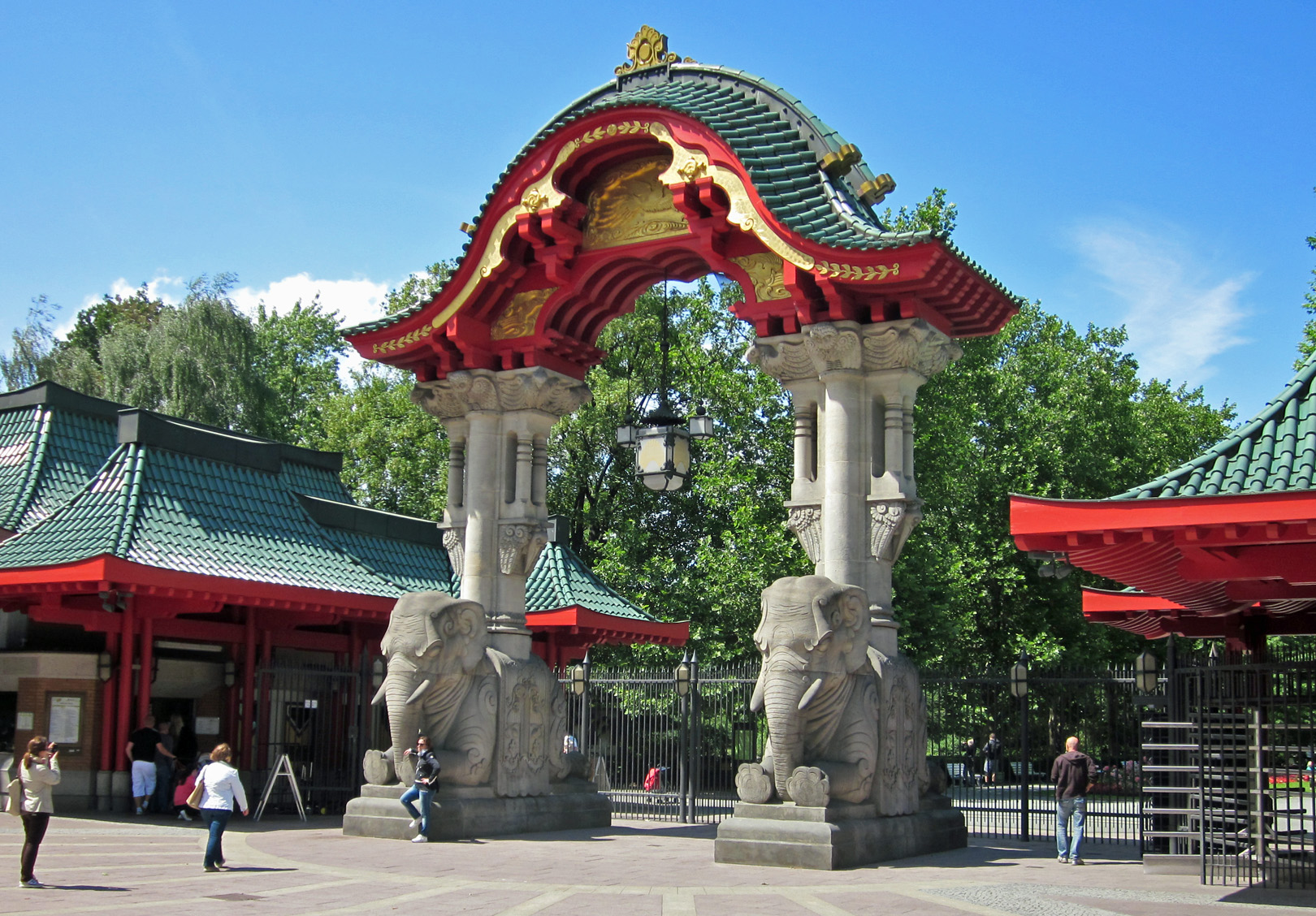

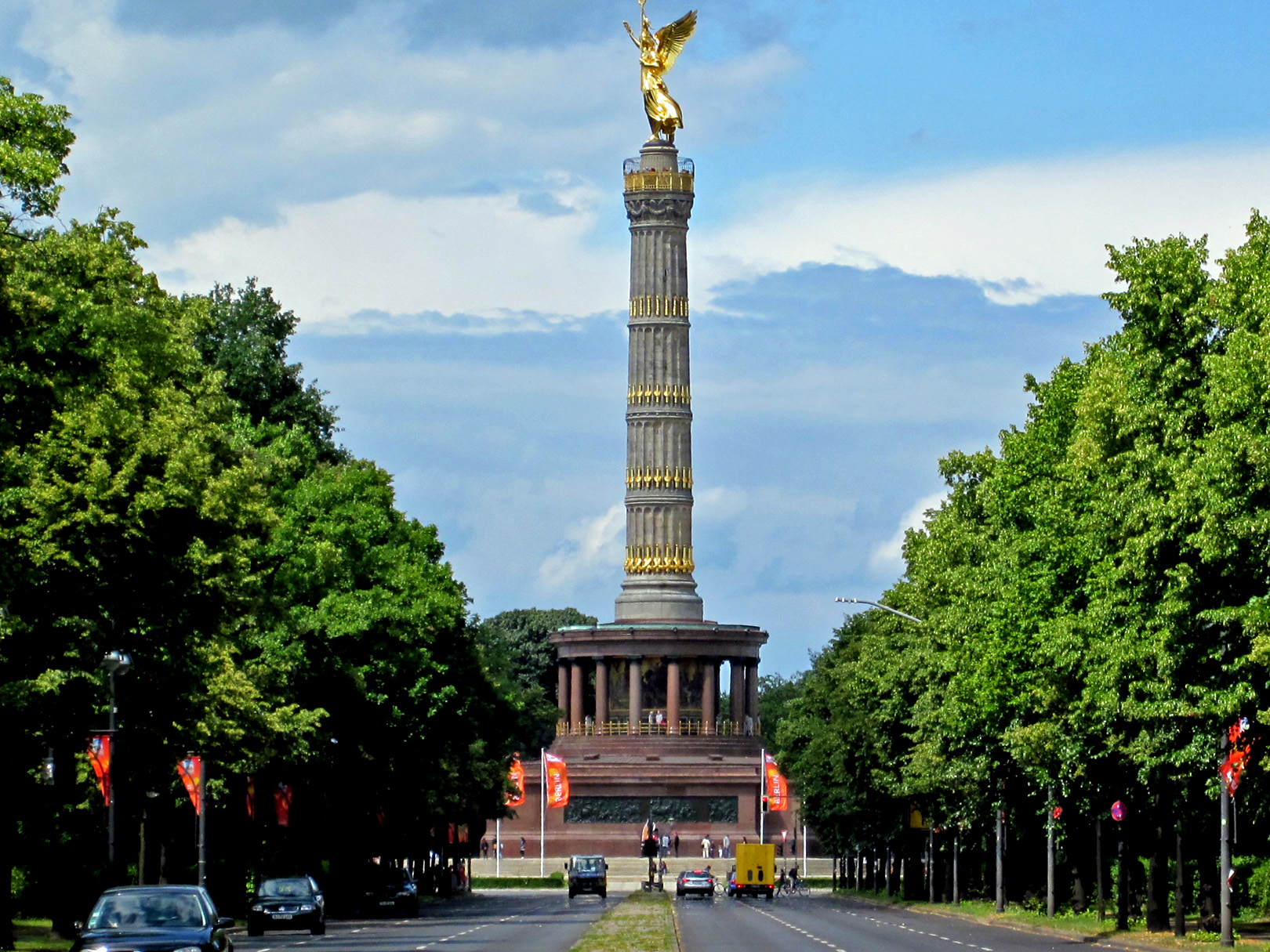
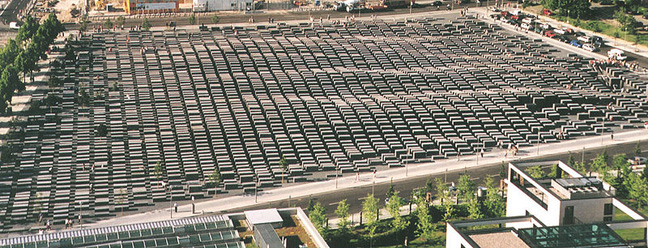
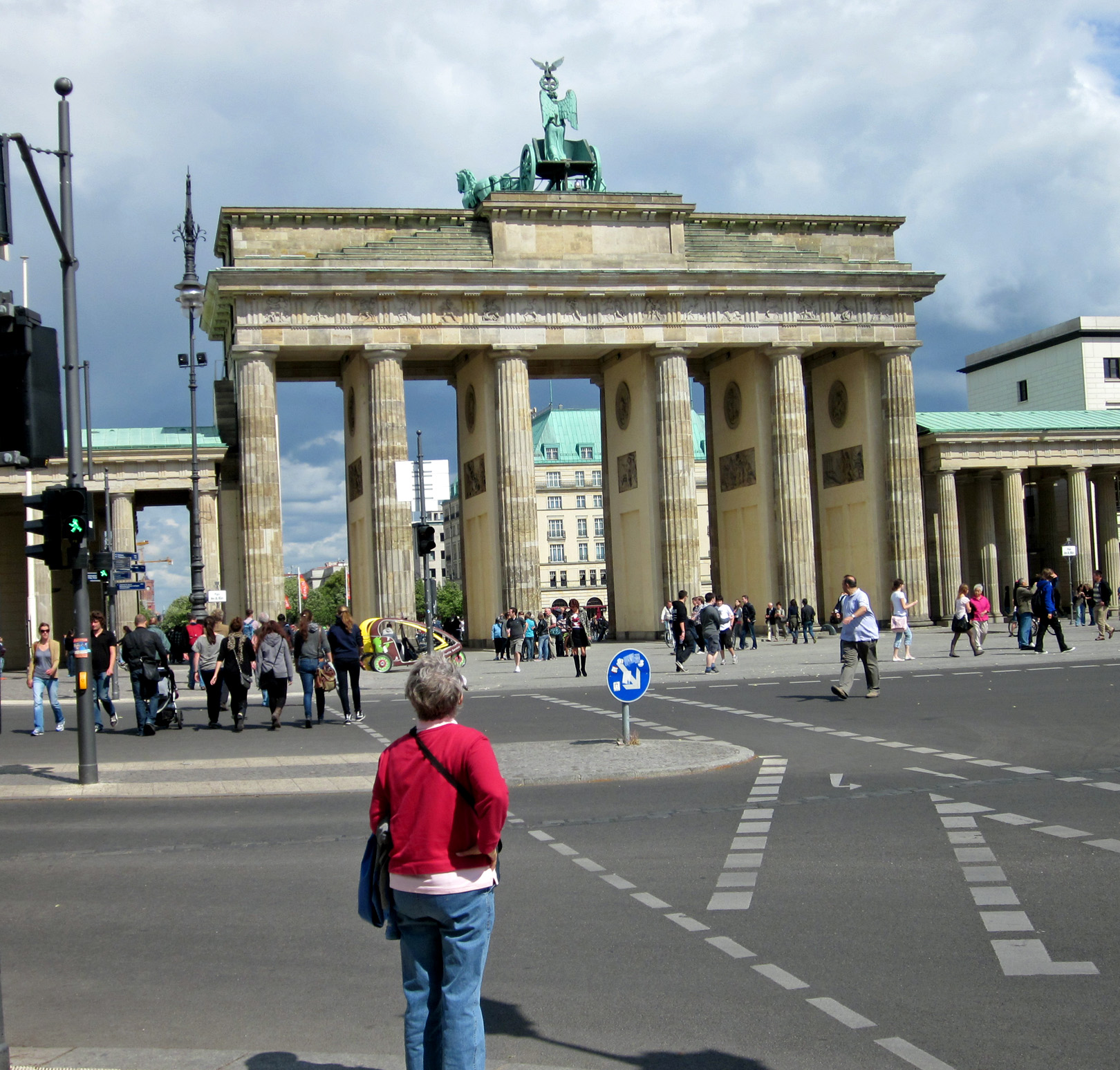
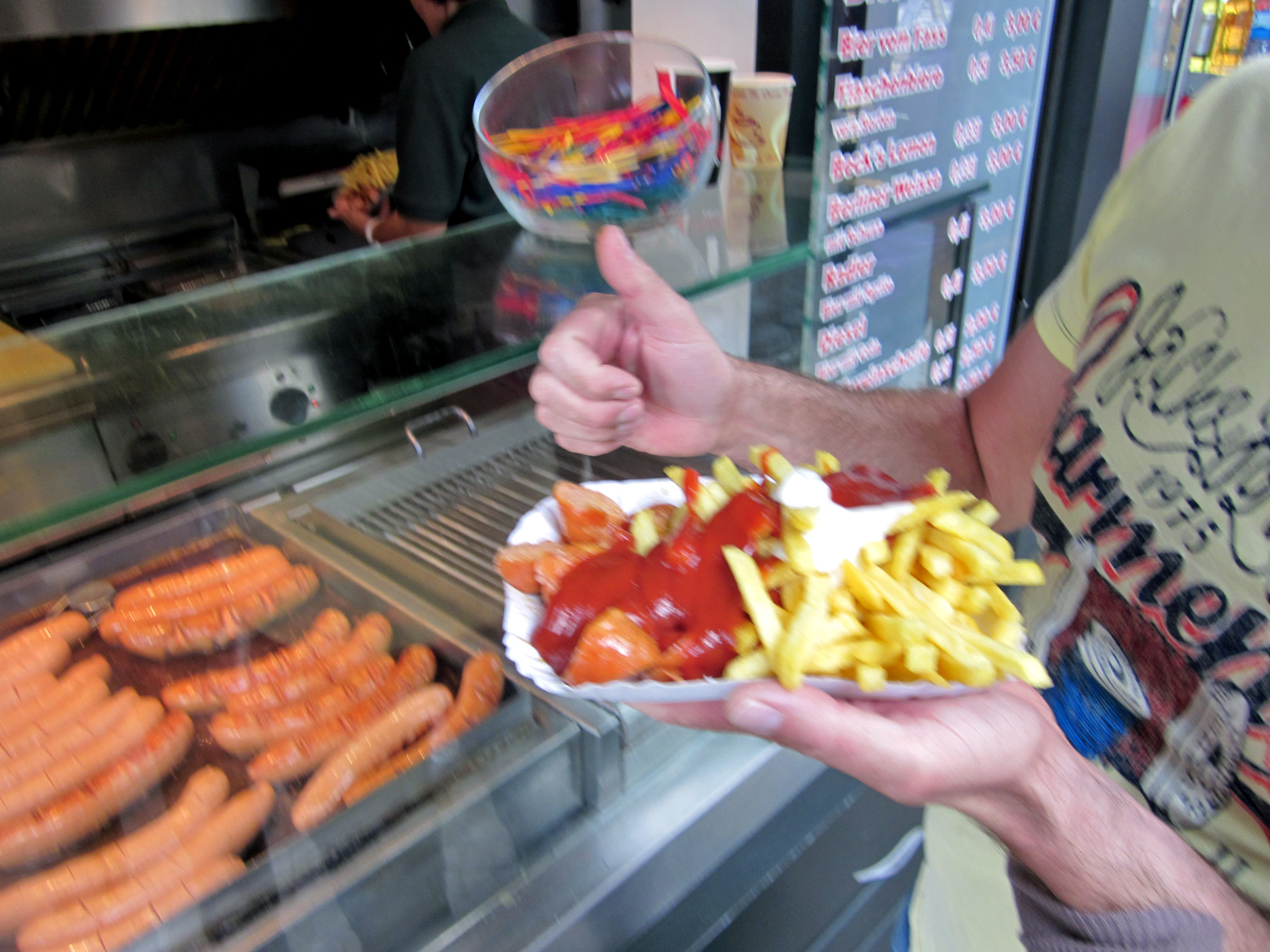
Go to Home
Go to P.3
Go to P.4
Go to P.5
Go to P.6
Go to P.7
Go to P.8
Go to P.9